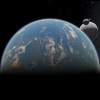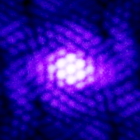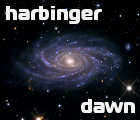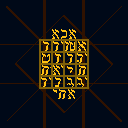|
Moons for known exoplanets
|
|
| Irigi | Date: Friday, 29.11.2013, 22:53 | Message # 1 |
|
Observer
Group: Users
 Czech Republic
Czech Republic
Messages: 18
Status: Offline
| At first I would like to thank you, guys. This game/simulator is amazing!! The pictures are incredible and the vast autogenerated universe is perfect. I always wanted something like this! So, really! Great work!
I also noticed one issue that caught my attention in this otherwise brilliant game. I noticed, that systems with known exoplanets, that use the catalogs, contain only the exoplanets specified in the catalog file. On the other hand, one can expect that they will also be filled with many moons, asteroids, comets and other objects that are hopelessly under the experimental possibilities of detection today. I wonder, do you think it would be a good idea to add feature, where the program would add moons and smaller objects to the systems with known exoplanets? (Probably with option to switch this autofill off if user wants to create system without autogeneration?)
Thank you and all the best!
Irigi
|
| |
| |
| SpaceEngineer | Date: Friday, 29.11.2013, 23:43 | Message # 2 |
 Author of Space Engine
Group: Administrators
 Russian Federation
Russian Federation
Messages: 4800
Status: Offline
| I plan to make such feature, but this is impossible with current planetary system generator. It must be completely rewritten first.

|
| |
| |
| Irigi | Date: Sunday, 01.12.2013, 13:38 | Message # 3 |
|
Observer
Group: Users
 Czech Republic
Czech Republic
Messages: 18
Status: Offline
| OK, thank you for your reply!
|
| |
| |
| apenpaap | Date: Monday, 02.12.2013, 00:19 | Message # 4 |
 World Builder
Group: Users
 Antarctica
Antarctica
Messages: 1063
Status: Offline
| I wonder when the first actual exomoon will be discovered. With a big moon and the transit method, maybe it won't be that far off.
I occasionally stream at http://www.twitch.tv/magistermystax. Sometimes SE, sometimes other games.
|
| |
| |
| Irigi | Date: Monday, 02.12.2013, 17:38 | Message # 5 |
|
Observer
Group: Users
 Czech Republic
Czech Republic
Messages: 18
Status: Offline
| I guess the hardest part of "filling the gaps" in systems with known exoplanets will be to have a good estimate on limits of current methods of the exoplanet search. It is not just the moons. For example a Mercury-size planets can be probably almost anywhere without being noticed, while the Earth-sized "moon" of a hot Jupiter in red-dwarf system might be easily spotted because of the gravitational pull it exerts on the star. Similarly, if the exoplanets were discovered by the transit method, there could be some planets too small to be noticed, too far from the star or with too big inclinations.
For a moment, I wanted to make a mod that would try to "fill the gaps" by exporting large amount of existing star systems in some galaxy far far away. The idea was, that one would find a similar planet in the database (similar star type, planet mass, eccentricity and semi-major axis, mostly) and attach its moons with slight modifications to the exoplanet in question. (The only really important check is probably the tidal-locking if the both planets differ slightly in the mass. If the moon would have different orbit time, we would have to adjust the rotation period if it was tidally-locked.) This way, it would be self-consistent with the current star system generator. But unfortunately, there probably isn't this kind of exporting available. (Or I was not looking good enough.)
|
| |
| |
| Watsisname | Date: Monday, 02.12.2013, 22:41 | Message # 6 |
 Galaxy Architect
Group: Global Moderators
 United States
United States
Messages: 2613
Status: Offline
| Limitations of exoplanet search methods are known pretty well, and is quantifiable. It depends on the observatory, method, and the target system.
A Moon-size moon of a hot Jupiter cannot be discerned by the radial velocity method because its signal is blended in with the signal from the planet it is orbiting. It just looks like one signal from a body with that total mass. However, if this planet/moon pairing transits its host star then we could possibly detect the moon by the transit method, since there will be a very tiny secondary transit in close association with the main planetary one. By looking at timing variations across multiple transits we could also characterize the exo-moon's orbit.
If a Moon-sized body is orbiting close in to a low-mass star then it could be possible to detect by radial velocity or transit (if it transits) method, but this is pushing limits of current technology. To my knowledge the smallest exoplanet yet known is roughly the size of Mercury.

|
| |
| |
| HarbingerDawn | Date: Monday, 02.12.2013, 23:29 | Message # 7 |
 Cosmic Curator
Group: Administrators
 United States
United States
Messages: 8717
Status: Offline
| Quote Watsisname (  ) To my knowledge the smallest exoplanet yet known is roughly the size of Mercury.
Actually it's closer to the Moon in size, at 0.3 Earth radii. Kepler-37b is the planet, for those wondering.
All forum users, please read this!
My SE mods and addons
Phenom II X6 1090T 3.2 GHz, 16 GB DDR3 RAM, GTX 970 3584 MB VRAM
|
| |
| |
| Voekoevaka | Date: Tuesday, 03.12.2013, 00:51 | Message # 8 |
 World Builder
Group: SE team
 France
France
Messages: 1016
Status: Offline
| There are already unconfirmed exomoons. For exemple, russians scientists have noticed second order variations of starlight on the transit-discovered exoplanet WASP-12 b, which means that there may be an exomoon there.
Want some music of mine ? Please go here !

|
| |
| |
| Red_River | Date: Monday, 23.12.2013, 02:11 | Message # 9 |
 Astronaut
Group: Users
 Canada
Canada
Messages: 56
Status: Offline
| we know there are moons around many large enough planets out there we just won't have the tech to reliably detect them for awhile.
hell, even Earth sized planets are tricky to spot!

|
| |
| |